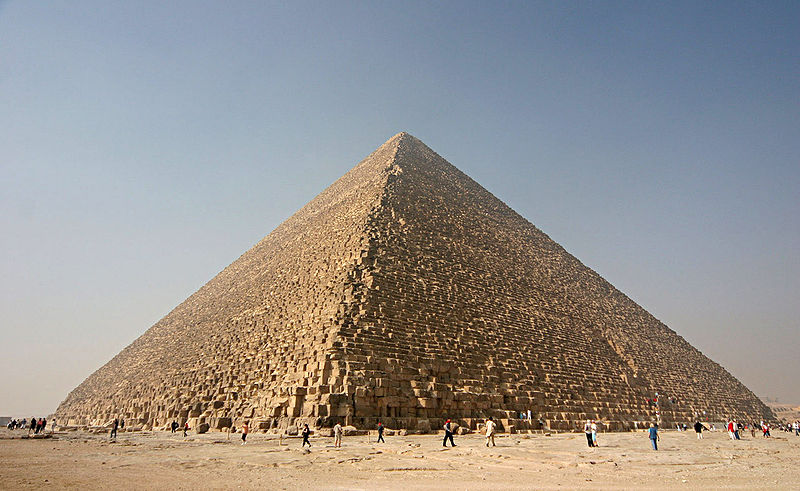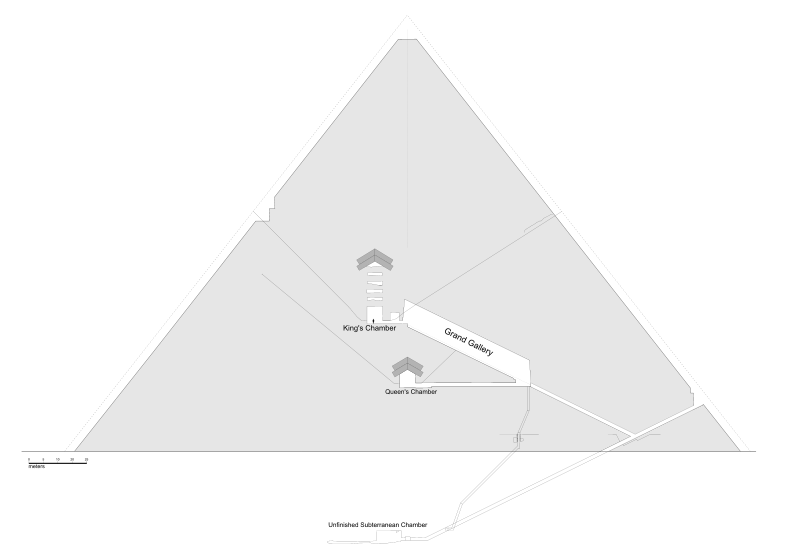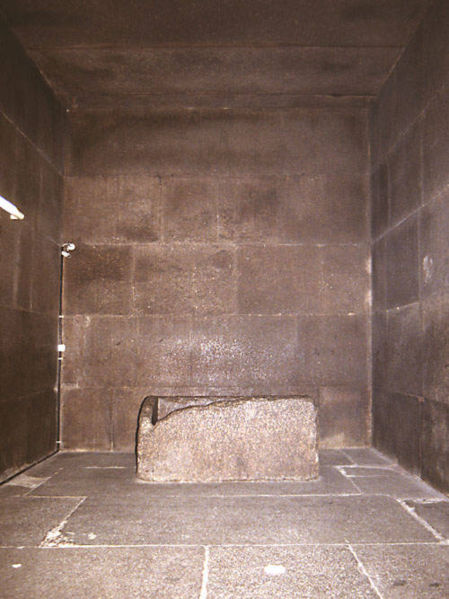
Exciting news - Egypt's Great Pyramid is hiding secret rooms and passages. At least that's the latest claim put forward by the French architect and pyramid expert Jean-Pierre Houdin.
Houdin works with a 3D scientific software company called Dassault Systemes - using virtual reconstructions of the pyramids to put ideas about their construction to the test. In 2006, Houdin presented evidence for the theory (first proposed by his father) that building materials for the Great Pyramid were carried up an internal spiral ramp.
On Thursday he presented his latest results at a press conference in Paris - evidence for two hidden antechambers leading from the king's burial chamber.
 The Great Pyramid was constructed by the 4th dynasty pharaoh Khufu, around 2560 BC. The only rooms known inside are the King's Chamber, Grand Gallery, Queen's Chamber, and an unfinished chamber cut into bedrock at the base of the pyramid (pictured right). Houdin thinks that the known corridors inside the pyramid were simply related to its construction and would have been impractical for the funeral procession to pass through. That would have required another - as yet undiscovered - passageway, as well as antechambers to store the furniture and objects related to the ceremony.
The Great Pyramid was constructed by the 4th dynasty pharaoh Khufu, around 2560 BC. The only rooms known inside are the King's Chamber, Grand Gallery, Queen's Chamber, and an unfinished chamber cut into bedrock at the base of the pyramid (pictured right). Houdin thinks that the known corridors inside the pyramid were simply related to its construction and would have been impractical for the funeral procession to pass through. That would have required another - as yet undiscovered - passageway, as well as antechambers to store the furniture and objects related to the ceremony.
The pyramid of Khufu's father - the so-called Red Pyramid at Dahshur - has similar antechambers off the burial chamber, and Houdin points out that Khufu would have been likely to use the same architects for his own pyramid.
If these extra rooms do exist, Houdin says it would explain the strange positioning of the known passages - they had to avoid these antechambers. The theory would also explain how (as most experts believe) the only known door to the King's chamber was closed from the inside.
 Houdin points to a stone block in the north wall of the burial chamber (pictured, the north wall is on the right) that does not bear any load from the course of stones above it. He thinks that this could be concealing the entrance to these secret rooms. Scientists who used ground-penetrating radar to scan the walls of the Queen's chamber saw what they thought could be a hidden corridor leading from the north wall. And this post on the Talking Pyramids blog points out that in later pyramids, the north wall was often decorated with the image of a false door.
Houdin points to a stone block in the north wall of the burial chamber (pictured, the north wall is on the right) that does not bear any load from the course of stones above it. He thinks that this could be concealing the entrance to these secret rooms. Scientists who used ground-penetrating radar to scan the walls of the Queen's chamber saw what they thought could be a hidden corridor leading from the north wall. And this post on the Talking Pyramids blog points out that in later pyramids, the north wall was often decorated with the image of a false door.
One way to find out if Houdin is right would be to scan the walls around the King's burial chamber with non-invasive methods such as infrared imaging or radar. The Egyptian authorities have turned down Houdin's requests to do this.
However Xavier Maldague and his team from Laval University in Quebec City, Canada, have applied for permission to scan with infrared imaging - a technique that they could apparently carry out from a nearby hotel room. They are still waiting for approval but hope that they might be able to start making measurements in 2012.
I should say that it feels a little strange to be writing about ancient Egypt right now, with such dramatic scenes playing out in modern-day Cairo. I guess that archaeology is pretty low down on the list of the protester's concerns but it is still absolutely gutting to see the state of some of the Egyptian antiquities damaged by looters smashing their way through the National Museum in recent days. Among other things, a couple of stunning gilded statues of Tutankhamun, from his tomb, have been ripped from their bases (the bases are lying smashed on the floor, it's not clear from the photos I've seen where the statues themselves are). These precious objects survived more than 3,000 years in Tutankhamun's tomb before they were excavated, and we can't even keep them safe for a century.
I hope that Maldague gets permission to scan the pyramid. But if the researchers do find hidden rooms, perhaps there is an argument for leaving their contents undisturbed.
*****
There's more on Houdin's theory at these blogs, all written by people who know far more about this than me:
Talking Pyramids
Pyramidales [in French]
Em Hotep